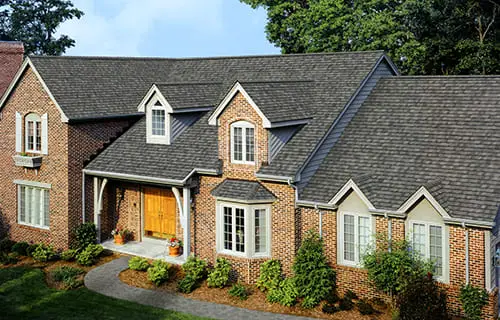Introduction
When it comes to selecting the perfect roof for your home, the variety of styles available can be overwhelming. Each roof style offers unique advantages and disadvantages, impacting not only the aesthetic appeal of your house but also its functionality, durability, and cost. Understanding these pros and cons is essential in making an informed decision that aligns with your needs and preferences. This article delves into ten popular roof styles, providing a comprehensive overview to guide you through this crucial aspect of home design.
1. Gable Roof
A gable roof, also known as a peaked or pitched roof, is one of the most common roof styles. It features two sloping sides that meet at a central ridge, forming a triangular shape.
Pros:
- Simplicity and Cost: Gable roofs are straightforward to design and build, making them cost-effective.
- Drainage: The steep slope allows for efficient water and snow runoff, reducing the risk of leaks.
- Ventilation: Ample attic space and ventilation options help regulate temperature and moisture levels.
Cons:
- Wind Resistance: Gable roofs can be vulnerable to strong winds, which may cause damage or uplift.
- Maintenance: Depending on the materials used, regular maintenance may be required to prevent wear and tear.
2. Hip Roof
Hip roofs have slopes on all four sides, which converge at the top to form a ridge. This design is commonly seen in residential architecture.
Pros:
- Stability: The inward slope on all sides makes hip roofs more stable and resistant to high winds.
- Aesthetics: They provide a more polished and sophisticated appearance.
Cons:
- Complexity and Cost: The design is more complex, often leading to higher construction costs.
- Less Ventilation: Compared to gable roofs, hip roofs offer less attic space and ventilation options.
3. Mansard Roof
A mansard roof, also known as a French roof, has four sides with two slopes on each side. The lower slope is steeper than the upper one, creating a distinctive look.
Pros:
- Extra Space: The steep lower slope provides additional living or storage space in the attic.
- Aesthetic Appeal: Offers a classic, elegant appearance often associated with French architecture.
Cons:
- Cost: Mansard roofs are expensive due to their complex design and additional materials.
- Maintenance: Requires more maintenance, particularly if the roof has dormer windows.
4. Flat Roof
Flat roofs are horizontal or nearly horizontal, with a slight pitch to allow for water drainage.
Pros:
- Cost-Effective: Easier and cheaper to construct due to the simplicity of the design.
- Usable Space: Provides additional outdoor living space, ideal for rooftop gardens or terraces.
Cons:
- Drainage Issues: Poor drainage can lead to water pooling and potential leaks.
- Limited Lifespan: Typically have a shorter lifespan and require more frequent maintenance.
5. Shed Roof
A shed roof, or skillion roof, has a single sloping surface, resembling half of a gable roof.
Pros:
- Modern Aesthetic: Popular in contemporary home designs for its sleek, minimalist look.
- Easy to Construct: Simpler and faster to build compared to more complex roof styles.
Cons:
- Limited Space: Provides less attic space and headroom.
- Wind Resistance: Can be more susceptible to damage from strong winds due to the single slope.
6. Butterfly Roof
A butterfly roof features two slopes that angle downwards towards the center, resembling a butterfly’s wings.
Pros:
- Unique Design: Offers a striking and modern appearance.
- Rainwater Collection: The central valley is ideal for rainwater harvesting systems.
Cons:
- Cost: Expensive to design and build due to its unconventional structure.
- Maintenance: Requires careful attention to drainage to prevent water accumulation.
7. Gambrel Roof
A gambrel roof is similar to a mansard roof but with two distinct slopes on each side, typically seen in barns and Colonial-style homes.
Pros:
- Space Efficiency: Provides ample attic or loft space due to the steep lower slopes.
- Classic Appeal: Offers a traditional, rustic look.
Cons:
- Complexity: More complicated to construct, increasing labor and material costs.
- Weather Vulnerability: The design can be less resistant to wind and snow loads.
8. Dormer Roof
Dormer roofs feature windows that project vertically from a sloping roof, creating additional usable space.
Pros:
- Natural Light: Enhances natural lighting and ventilation in attic spaces.
- Aesthetic Value: Adds character and charm to the roofline.
Cons:
- Cost: Increases construction costs due to the additional complexity.
- Maintenance: More susceptible to leaks around the dormer windows if not properly maintained.
9. Curved Roof
Curved roofs have a smooth, arched shape that can range from a gentle curve to a full dome.
Pros:
- Unique Appearance: Offers a modern, distinctive look that stands out.
- Aerodynamics: Excellent wind resistance due to the aerodynamic shape.
Cons:
- Cost: More expensive to design and construct.
- Complexity: Requires specialized skills and materials, increasing the overall project cost.
10. Combination Roof
Combination roofs incorporate elements of various roof styles to create a customized design.
Pros:
- Versatility: Allows for a personalized approach that meets specific needs and preferences.
- Enhanced Aesthetics: Combines the visual appeal of multiple styles.
Cons:
- Complexity and Cost: Highly complex to design and build, resulting in higher costs.
- Maintenance: Different elements may require varied maintenance approaches, complicating upkeep.
Conclusion
Choosing the right roof style for your home is a significant decision that impacts both the functionality and aesthetic appeal of your property. By weighing the pros and cons of each roof type, you can make an informed choice that meets your needs, budget, and design preferences. Whether you prioritize cost-efficiency, additional space, or unique aesthetics, there is a roof style that will align with your vision. Consider consulting with a roofing professional to explore your options further and ensure that your chosen roof style enhances the overall value and comfort of your home.


